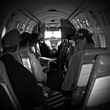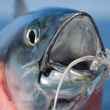For many of us, the complex pastime of fly fishing is—as John Voelker once wrote—“an endless source of delight and an act of small rebellion.” In This Artful Sport (Lyons Press, 2024), Paul Schullery and Steve Raymond show us how writing about fly fishing can be as intricate, demanding, and rewarding as the sport itself. Written for both anglers interested in writing and writers intrigued by angling, this book is far more than a how-to manual; it's an engaging exploration of fly fishing’s culture, history, and literary tradition.
Schullery and Raymond are accomplished storytellers with over sixty books between them and experience in all aspects of writing, publishing, and editing. Their style is conversational, much like old friends swapping tales around a fire, but with a measured authority that earns your trust from the opening page.
“Fly fishing and writing are very different disciplines but they enjoy at least two remarkable similarities,” they explain in the first chapter, emphasizing that both are solitary pursuits hinging on “individual experience, skill, research and introspection.” But no one casts a line perfectly—or even competently—the first time they pick up a rod, so why do so many aspiring writers think they’ll do so the first time they pick up a pen?
“Many people assume they have natural writing talent only to discover they were mistaken when they try it,” the authors caution, emphasizing the importance of finding and developing that magical but elusive characteristic known as “voice.” Developing this voice, they argue, is as vital to writing as a well-presented cast is to angling.
“It’s all the elements that combine to form your own unique literary style—simplicity, rhythm, cadence, lyricism, word choice, alliteration, punctuation, nuance and color. These blend seamlessly to make your words as unique as the works of a classical composer, or as distinctive as a songbird’s signature call.”
The book’s "Why Write" sections are terrific explorations of the good, bad, and ugly reasons for writing. While encouraging writers to share their love for the sport or bring attention to important environmental issues or simply tell a good tale, the authors caution against less admirable motives—like chasing after fame or free trips—with a gentle but firm declaration that writing, like fishing, is best done for the love of it.
And, like Norman Maclean’s commentary on grace, art, trout, and eternal salvation in A River Runs Through It, Schullery and Raymond are careful to note that good writing does not come easy.
“Many if not most newcomers find that learning to be a good writer isn’t as much fun as learning to be a fly fisher (Paul found both to be simultaneously exasperating and exciting), but this book will try to make it easier and more enjoyable than it would be otherwise; we’ll even suggest a few exercises and other little schemes that might help speed up the process.”
Every angler knows—or should know—about the unspoken rules on the water, and the same goes for writing. Schullery’s and Raymond's list of dos and don’ts is a practical—and sometimes personally painful—fount of advice. Consider, for instance, Our trout were all caught on a beautiful chicken-gut pattern versus We caught all our trout on a beautiful chicken-gut pattern. “If the difference seems trivial to you,” they warn, “trust us that it is much less likely to seem so to an editor.”
This is the sort of book you’ll want to fill with highlights, margin notes, and page markers for memorable quotes. Some of the advice and observations—like the quote from William Humphrey’s fishing memoir, My Moby Dick—should be, as Schullery and Raymond suggest, required reading for all ambitious writers, perhaps framed on the wall beside their desk:
“The angler had metamorphosed into the ichthyologist, and the prevailing prose reflected the change—if mud can be said to reflect . . . Participles dangled, person and number got separated and lost, clichés were rank, thesauritis and sesquipedalianism ran rampant, and the rare unsplit infinitive seemed out of place, a rose among the nettles . . . What came out was a richness of embarrassments: shoddy prose patched with purple—beautifully written without first being well written.”
The chapter "Read Before You Write" is an ode to fly-fishing's rich literary tradition. In it, Schullery and Raymond emphasize how the timeless wisdom of writers like Arnold Gingrich and Sparse Grey Hackle is as essential for the aspiring writer as a box of time-tested flies for the angler.
Paul Schullery and Steve Raymond cover all aspects of fly-fishing writing, from style to technique to technology to selling, marketing, and promoting your work. But, more than just a guide for better writing, this book is about preserving memories, advocating for our waters, and sharing the joys and challenges of our artful sport. The best stories—like the best casts—come with study, practice, and attention to detail, and I believe integrating the insights from this book into that process will make you a better writer, sharper reader, and more thoughtful angler.





























Comments
Bob DeMott replied on Permalink
Fine review, Tim, and bravo to Schullery and Raymond (and Lyons press) for bringing this insightful book to print.
Anonymous replied on Permalink
"Normal Maclean" ... Please remember proof reading
Pages